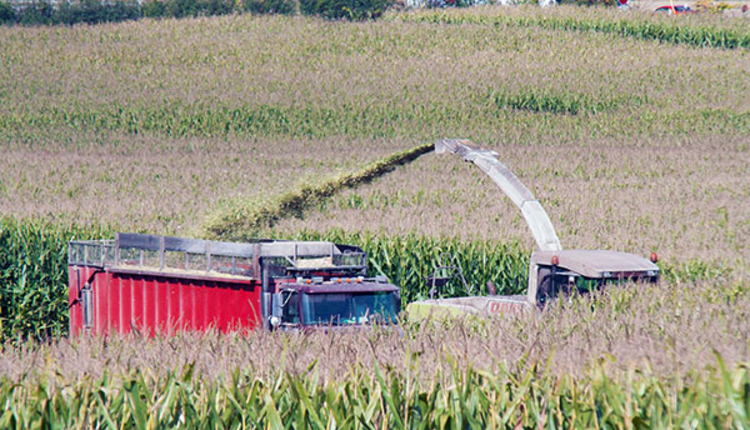
“High-quality silage is important because of its value as a source of energy and other nutrients for growing cattle, and as a roughage source for finishing cattle,” said Dan Loy, Iowa State University animal science professor.
At last week’s Silage for Beef Cattle Conference in Mead, Neb., Loy shared that certain measures of silage quality reflecting the fermentation and storage quality not only impact the feeding value but also storage losses. Feed analysis reports may contain 50 or more measured and calculated values, which Loy remarked could be daunting without an understanding of their purpose.
“The first indication of silage quality is dry matter,” noted Loy. High-quality corn silage is typically between 30 to 40 percent dry matter. Frequent testing is recommended since silage dry matter content can change during storage and feedout. Oven dry matter is the standard for forage testing labs, but a microwave oven or “Koster” tester can be used on the farm. Loy recommends testing corn silage and/or the TMR for dry matter on a weekly basis, or even daily if consistency is an issue.
Chemical analysis is the primary determinant of the nutritional value of silages. The Van Soest method of fiber determination is the standard for evaluation of forage fiber components. Neutral detergent fiber (NDF) represents the insoluble fiber in a neutral detergent solution. Acid detergent fiber (ADF) is the fiber that is insoluble in an acid detergent solution. Equations have been developed for most common forages that estimate energy values based on ADF content.
Loy explained that in vitro digestibility, which has become a commercially available laboratory method, is an anaerobic fermentation done in the laboratory using rumen fluid to evaluate and compare feedstuffs. Factors relating to the diet and recent feed intake can affect results of the test. Some labs offer a choice of fermentation time lengths. For a background beef cattle diet, a longer fermentation of 48 hours may be the best representation.
“Fermentation analyses are important to assess not only the nutritional value of the silage but also the quality of the fermentation process,” says Loy. The target pH for corn silage is about 4.0. A pH greater than 4.6 to 4.8 is likely due to an incomplete fermentation, poor fermentation due to being too dry, or spoilage. Lactic acid should be 5 to 10 percent while acetic and butyric acid should be less than 1 percent. Lactic acid should be more than 70 percent of all acids and the lactic: acetic acid ratio should be more than three.
Silage with a butyric acid concentration of about 0.5 percent indicates clostridial fermentation, which is common in silages that are too wet. If ammonia concentrations are high (greater than 12 to 15 percent of crude protein), protein breakdown has occurred. Corn silage that contains more than 3 percent ethanol is consistent with yeast fermentation, so it may be more at risk for rapid spoilage.
Aerobic organisms, including molds and aerobic bacteria, can develop in poorly fermented silage. Listeria is the most harmful bacteria that can develop. Some molds can also produce mycotoxins that may affect animal performance.
In determining effective particle size of silage, Loy notes that general guidelines recommend the majority of the feed be larger than 4 millimeters, especially for a finishing diet. The Penn State particle separator can help in evaluation.
“Measures indicative of fermentation quality are important regardless of the class of cattle the silage is fed to,” remarks Loy. In growing cattle, indicators of energy content or protein quality are important in determining the ability to convert the feed nutrients to growth. In finishing cattle, particle size and effective fiber are more significant in evaluation.
Loy has created a spreadsheet to evaluate backgrounding diets and feeding programs for growing beef cattle where silage is a major feed ingredient. It is available at http://www.iowabeefcenter.org/Software/CornSilageToBeef.xls.

